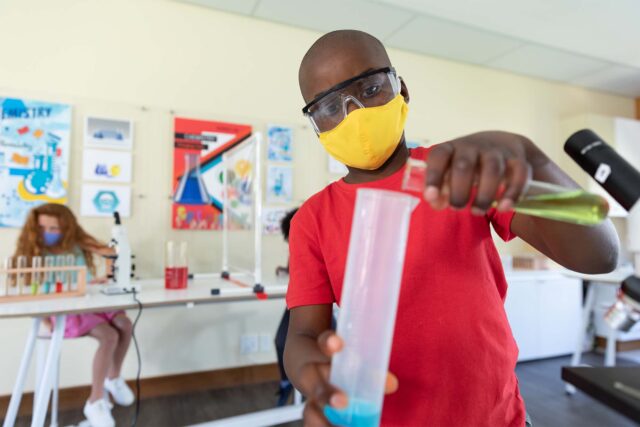California’s K–12 schools are implementing the Next Generation Science Standards (NGSS) to improve the way science is taught. The standards, adopted in 2013, represent a paradigm shift for science education. Although awareness of the new standards is high, implementation has been uneven, according to a new PPIC report.
Report coauthor Niu Gao presented the analysis in Sacramento last week. She said many districts report that instructional materials are a big challenge, and most also struggle with inadequate science labs and equipment. Insufficiently credentialed science teachers and challenges in professional teacher training are two other ongoing concerns. These problems are exacerbated by California’s chronic teacher shortage.
Gao concluded with a brief summary of the report’s policy recommendations, which include a greater emphasis on science in the early grades and three science courses—instead of two—as a high school graduation requirement. Gao’s presentation was followed by a discussion among a panel of experts who work in this area.
Jessica Sawko, executive director of the California Science Teachers Association, explained the rationale for teaching science in the early grades. Since NGSS builds upon the previous years’ instruction, this can put older students at a disadvantage if they’re not taught science early. “If you’re not teaching science in grade two, then you’re underpreparing students” for courses taught in grades three to five, she said.
When asked about the upcoming field test of the NGSS, Trish Williams, a member of the California State Board of Education, called it a “great opportunity” to collect data and get a snapshot of where we are—and what to do next. But she acknowledged that test results could vary. With a large state like California, Williams said, we can’t expect everyone to “knock it out of the park” on the first try. She also expressed concern about economic issues that put “low-performing districts at a terrible disadvantage.”
Stacey Lerma, a professional development specialist with the Moreno Valley Unified School District, added, “It’s going to take time for teachers to be comfortable with everything the test is assessing and for students to be prepared” for the new standards. Despite the challenges ahead, Lerma expressed deep support for the NGSS. When kids are dreaming about what to do when they grow up, “they need to think of things besides teacher, fire fighter, police officer, and think astronaut, scientist, and engineer.”
Read the report Implementing the Next Generation Science Standards: Early Evidence from California (March 2018)





